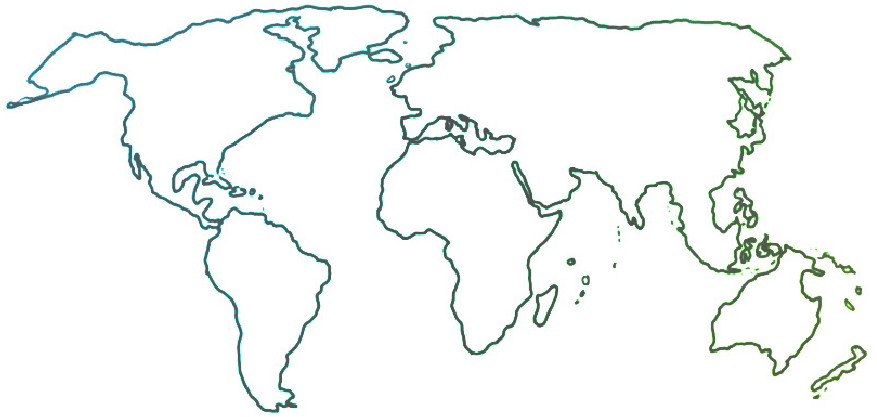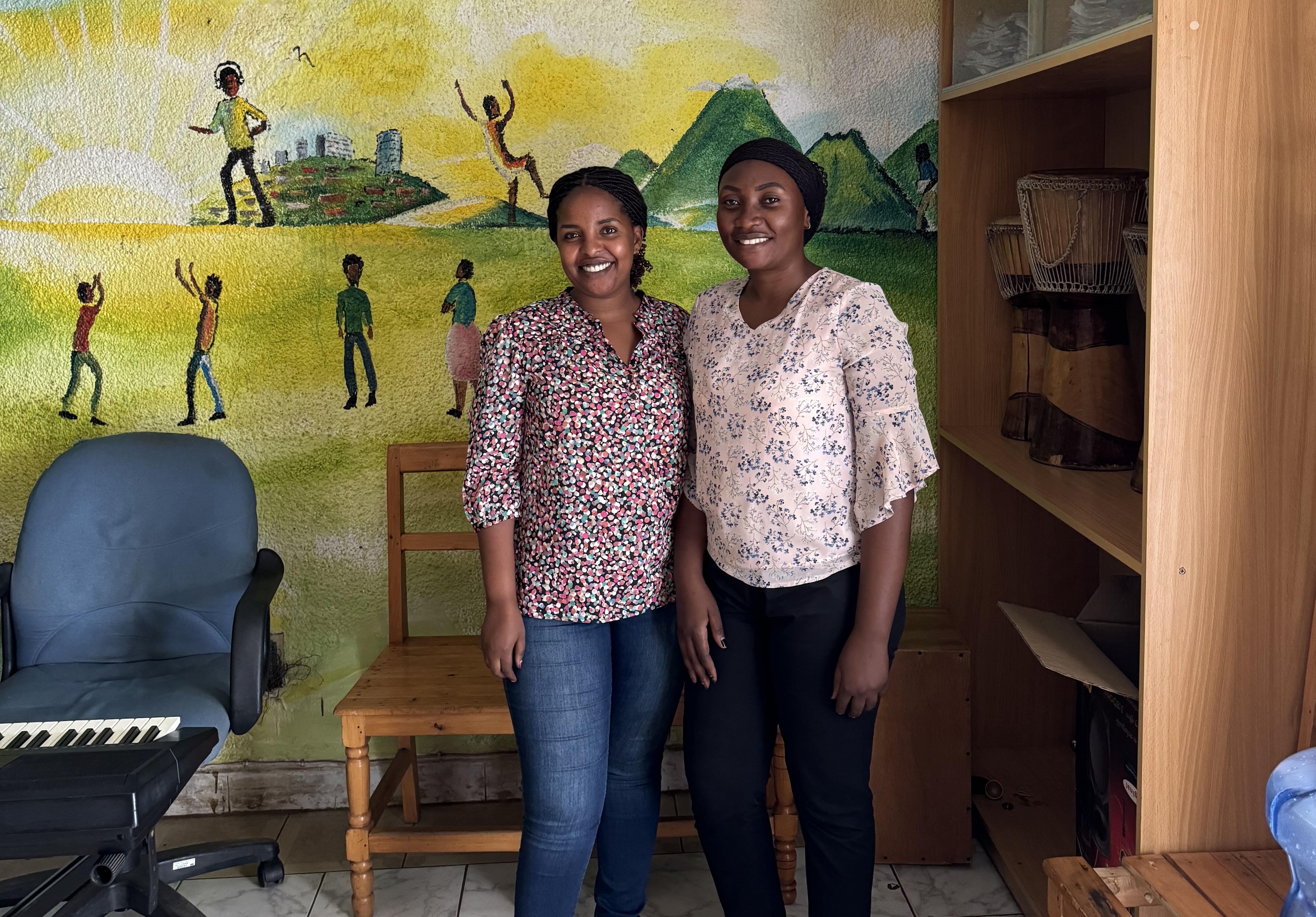
Topics
Exploring Music Therapy in Rwanda with Musicians Without Borders
Amelia Caesar-Homden, musician and final-year music therapy student at the University of the West of England (UWE), Bristol, U.K.

Emelyne and Madina, Administrators of WE-ACTx for Hope.
Music therapy for hearing-impaired people? I’ve been a musician for 20 years, and I am currently a third-year trainee music therapist studying at the University of the West of England in Bristol. But I never really knew how impactful music can be for children who are deaf or have hearing impairments until I had the opportunity to accept a professional placement with Rwanda Youth Music in Kigali, Rwanda. Rwanda Youth Music is a partnership project between the Rwandan NGO WE-ACTx for Hope and Musicians Without Borders.
During my three months on placement in Rwanda, I was fortunate to work with Rwanda Youth Music workshop leaders and see Musicians Without Borders’ music leadership methodology in action, and to work directly with clients myself to develop my skills as a trainee music therapist. I loved being in Rwanda—it was even better than I could have imagined. I was especially struck by how friendly and helpful the people are and how tight-knit the community is.

You might ask, how can we use music with people who are not able to hear? I wondered the same thing. I had read a bit about the impact of vibrations, but that was pretty much all I knew. And I didn’t know how we would communicate, since sign language in Rwanda is very different. My basic knowledge of Makaton (a communication system that combines verbal speech, sign language, and images) wouldn’t be much help.
The first time we met with the young students, we started by experimenting with some body percussion. We would demonstrate an action—clapping, clicking, etc.—and the students would imitate it. We wanted to pass around the role of “leader”—meaning gesture originator—to each student, but how would we communicate what we were doing? We had an idea: we noticed that they were always playing basketball before our sessions, so we would mime throwing a ball to a student. It worked! Each student to whom we ‘threw’ the imaginary ball understood that it was their turn to initiate a new body percussion movement. These students experienced the sonic impact of these body percussion games as vibrations they could physically feel. By combining music, rhythm, and gesture, we were able to develop the group activity and involve all the children in a leadership role.
Research has shown that loneliness and social isolation are common among those who are deaf or have severe hearing impairments. Some of the young students also spoke different languages, so they were dealing with language barriers as well as hearing challenges. Music brought moments of great fun and connection between all the group members.

I was also fortunate to experience working with Rwanda Youth Music workshop leaders at WE-ACTx for Hope, an amazing clinic in Kigali, running a support group for teenagers living with HIV. The main therapeutic tool we used with this group was songwriting. For me, of course, it was a challenge that I wasn’t able to speak their language—apart from being able to say “Nitwa Amelia” (“my name is Amelia”) and ask them how they were. I’d made it my habit, since I’d arrived in Rwanda, to ask everyone to teach me a word in Kinyarwanda, and this practice proved valuable in our music sessions. As a songwriter improvising with a client, I found that bringing in a few words of Kinyarwanda through song widened the opportunity for connection between us. However, the real means for profound communication between us was the music itself.
Working with people who are non-verbal, or where a shared spoken language is not available, means that the music really does the talking. It says everything that needs to be said.
Editor’s note: An earlier version of this article appeared as a blog in the MWB newsletter, March 2024.


